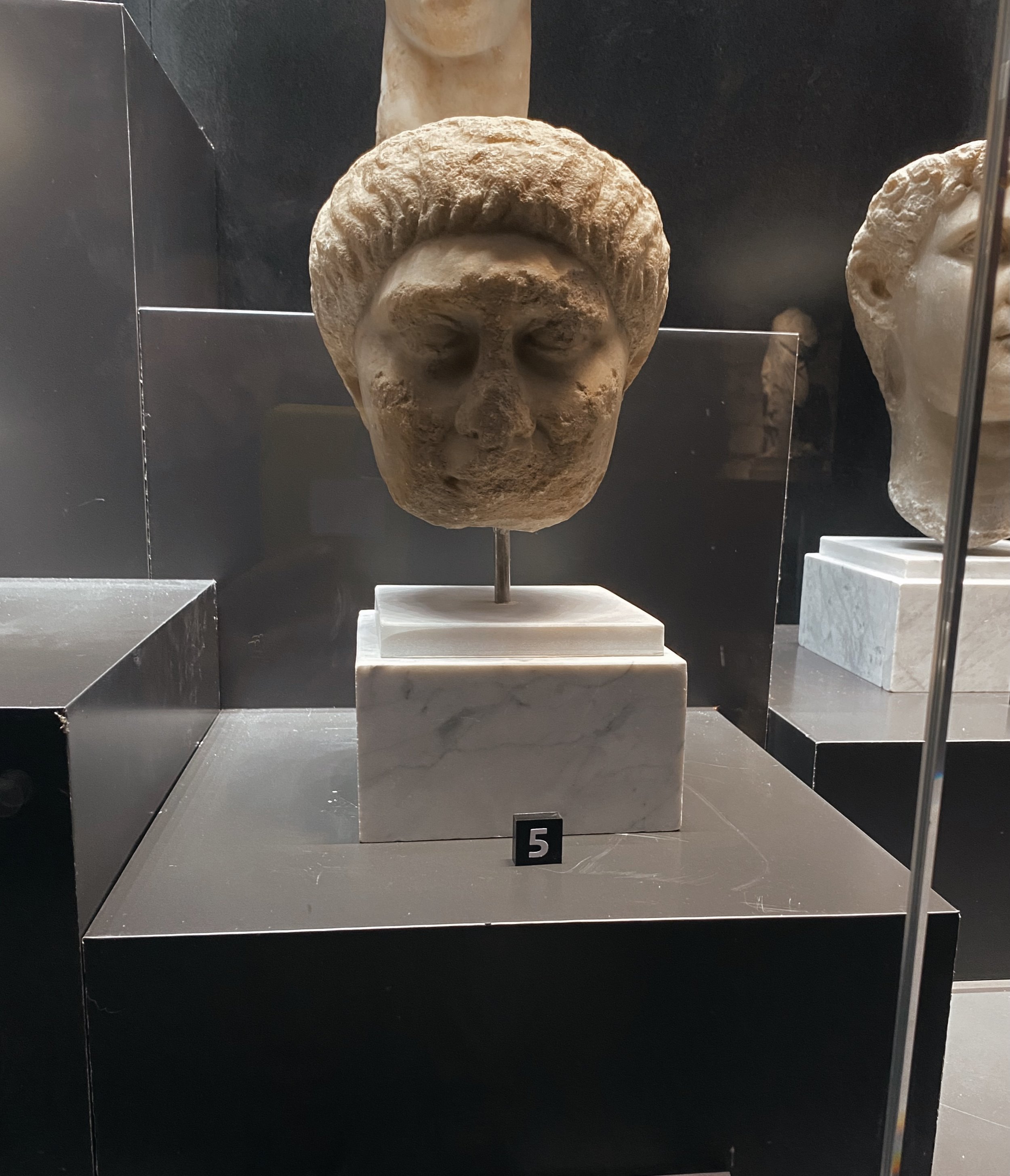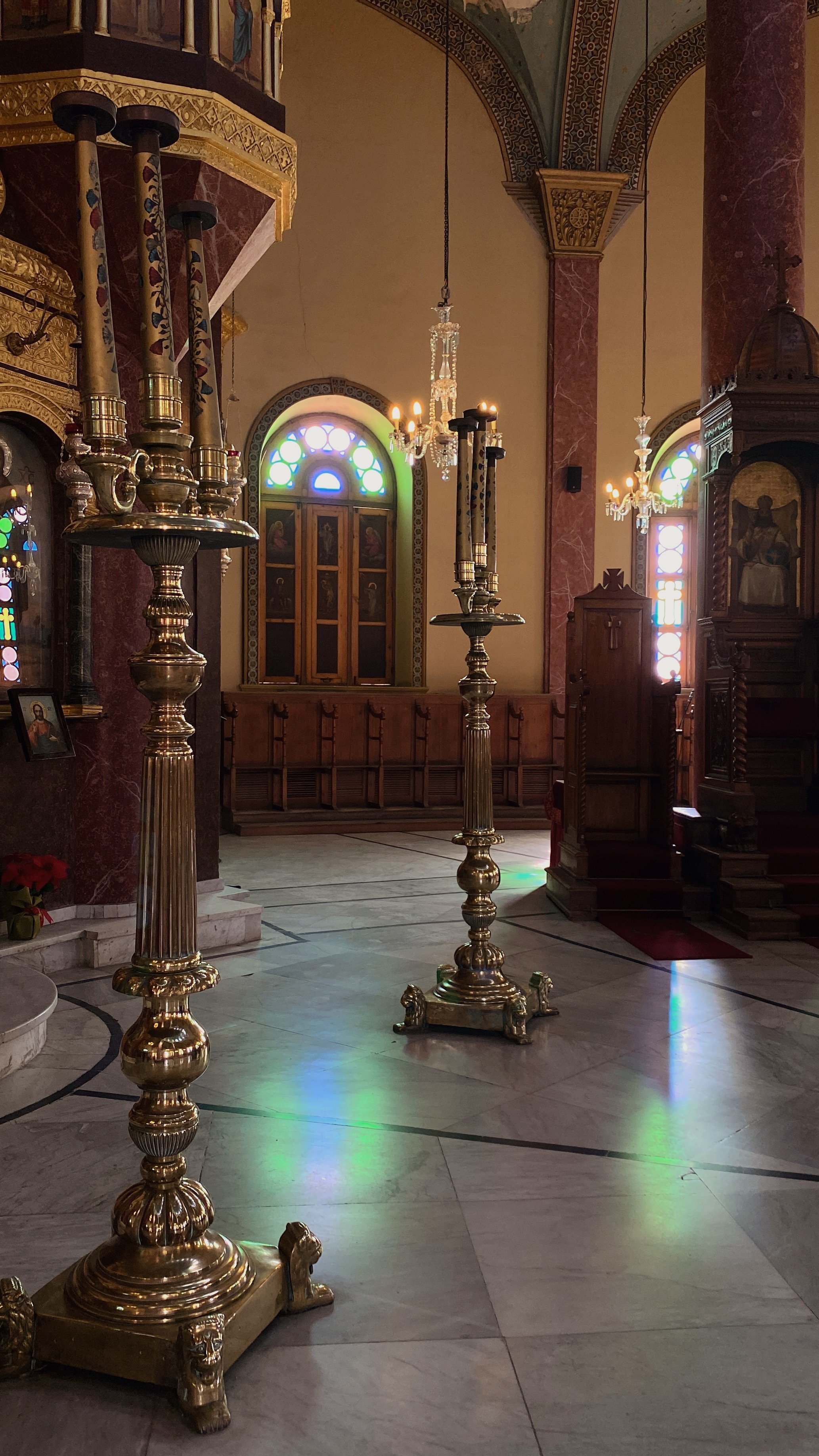Must Visit Churches in Coptic Cairo
Cairo is a city that encompasses almost all of human history.
For travelers with a short time in Cairo, it's common to miss out on some of these significant eras due to the large focus on Ancient Egyptian sights. And while the Giza Pyramids are a must-see, Cairo's Coptic history shouldn’t be missed, that's why today, we want to tell you about a less sought-after Coptic Cairo and its neighborhood, Mar Girgis. Cairo's Coptic history unlocks a new dimension regardless of your religious beliefs.
The neighbourhood's street sign
To learn about the fascinating history of this ancient neighborhood, we spoke with Asmaa Khattab, the founder of Walk Like an Egyptian. This tour company has been offering incredible experiences around Egypt since 2015. They offer both private and group tours of everything from the Giza Pyramids to more off-the-beaten-track sights like City of the Dead. If you’re looking for a professional team of guides in Egypt, here’s your opportunity to support a fantastic, local, female-owned business!
We’re grateful to Asmaa for her expert knowledge on this unique part of Cairo. Without further ado, here’s an intro to Coptic Cairo’s must-visit spots!
the religious complex
On the East bank of the Nile in Cairo, not far from the (new) National Museum of Egyptian Civilization is one of Cairo’s oldest neighborhoods. The greater area is known as Coptic Cairo, but it’s the Mar Girgis neighborhood, that houses what locals know as “Mogamaa Al Diyanat/Adyan” - which translates to The Religious Complex. The three religions referred to here are Islam, Christianity and Judaism. This is because this complex includes Amr Ibn al-As mosque, churches, a synagogue, and more in its vicinity!
Historically, this part of town wasn’t just significant throughout Ancient Egypt, splitting Lower and Middle Egypt, it was also where the Roman Emperor Trajan built the Babylon Fortress during the 1st century AD.
Emperor Trajan Bust at The Graeco Roman Museum in Alexandria
During the Arab conquest of Egypt, the Byzantine fortress held out for about seven months before falling in December 640 to the Arab general Amr ibn al-As
Following the Arab victory in Egypt, General Amr ibn al-As founded Fustat near Babylon, which became Egypt's first Islamic capital. The decision to repurpose the Roman fortress was motivated by its advantageous location along the Nile River and proximity to trade routes.
Fustat quickly grew into a thriving city, serving as the administrative, economic, and cultural hub for the newly conquered territory. Fustat thrived and expanded over the centuries, leaving traces of its diverse heritage as well as the cultural blend that defined Islamic Egypt.
The Religious Complex is an important part of Historic Cairo, and it contains our recommendations for four churches to visit the next time you are in town.
1- The Hanging Church
The Hanging Church, also known as Saint Virgin Mary's Coptic Orthodox Church, is located in the Coptic Cairo neighborhood (Old Cairo), near the famous Babylon Fortress and the Coptic Museum.
The church is one of the oldest Coptic Christian churches in Egypt, with its origins dating back to the 3rd century AD. The current structure is from the 7th century to the 18th century. The name "Hanging Church" is derived from its location above the gatehouse of the Babylon Fortress.
The Hanging Church is dedicated to the Virgin Mary. It is said to house important relics, including 110 icons. Formerly serving as the official residence of the Coptic Pope starting in the 11th century, the Hanging Church has been a focal point for Coptic Christians.
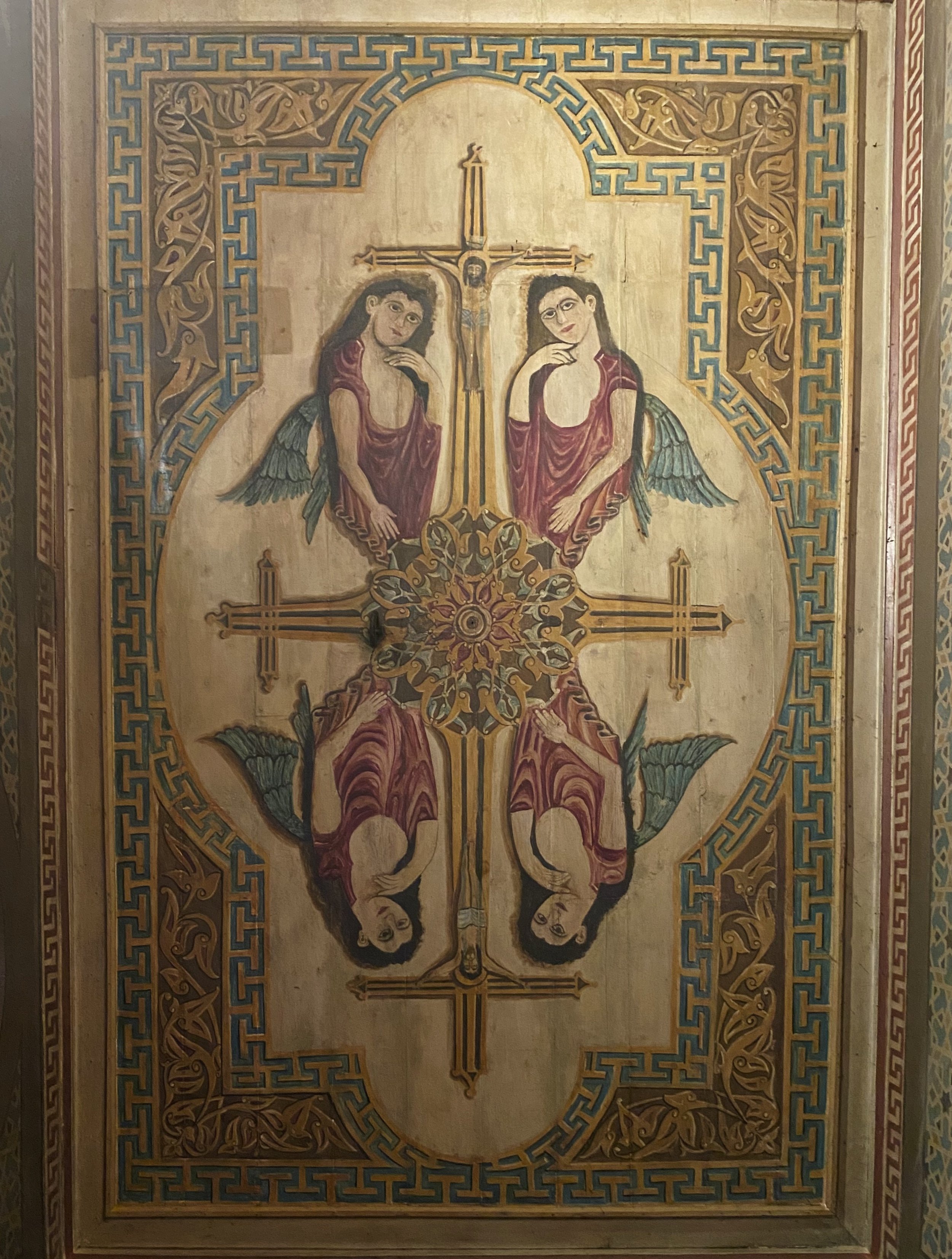

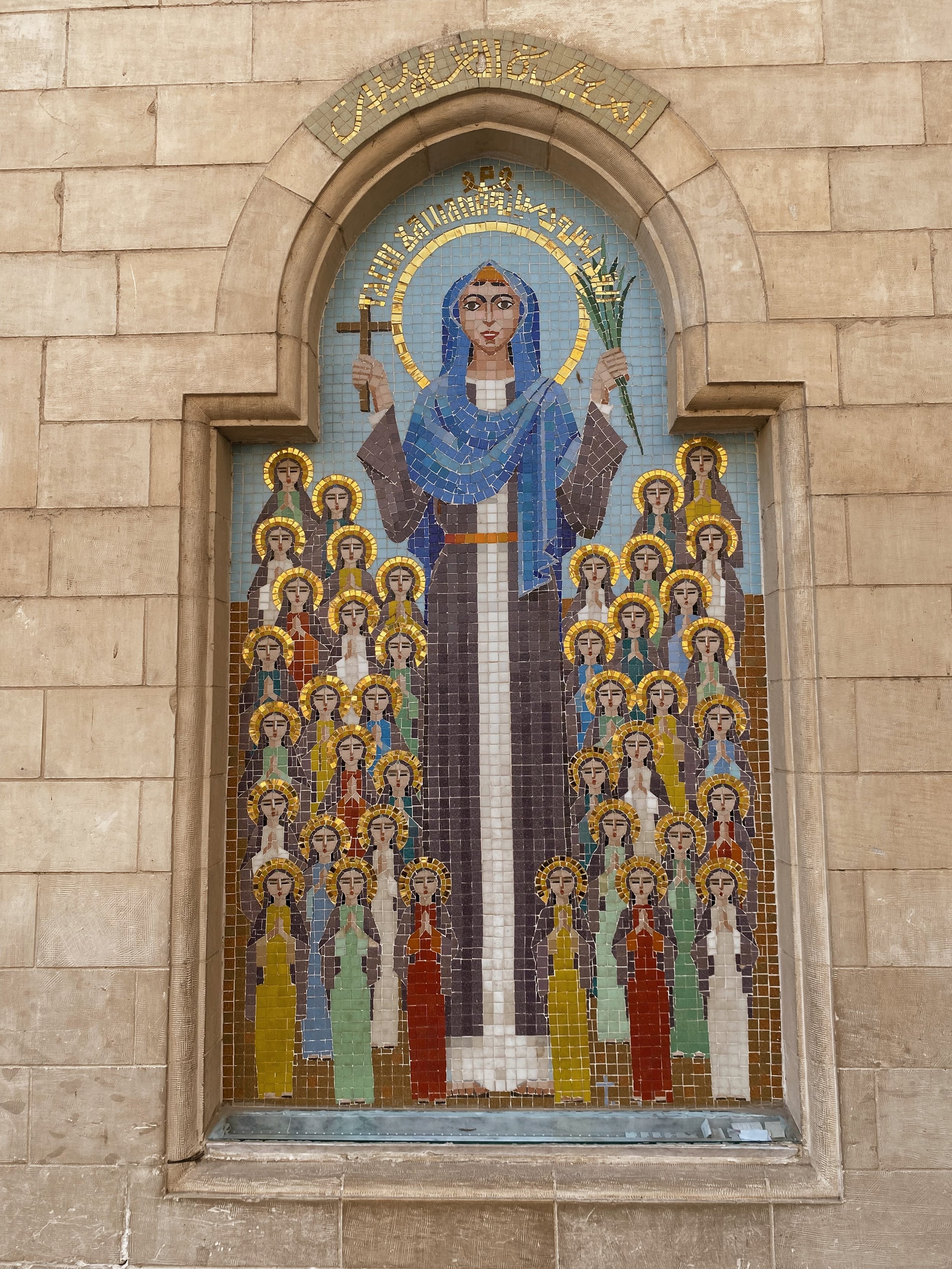
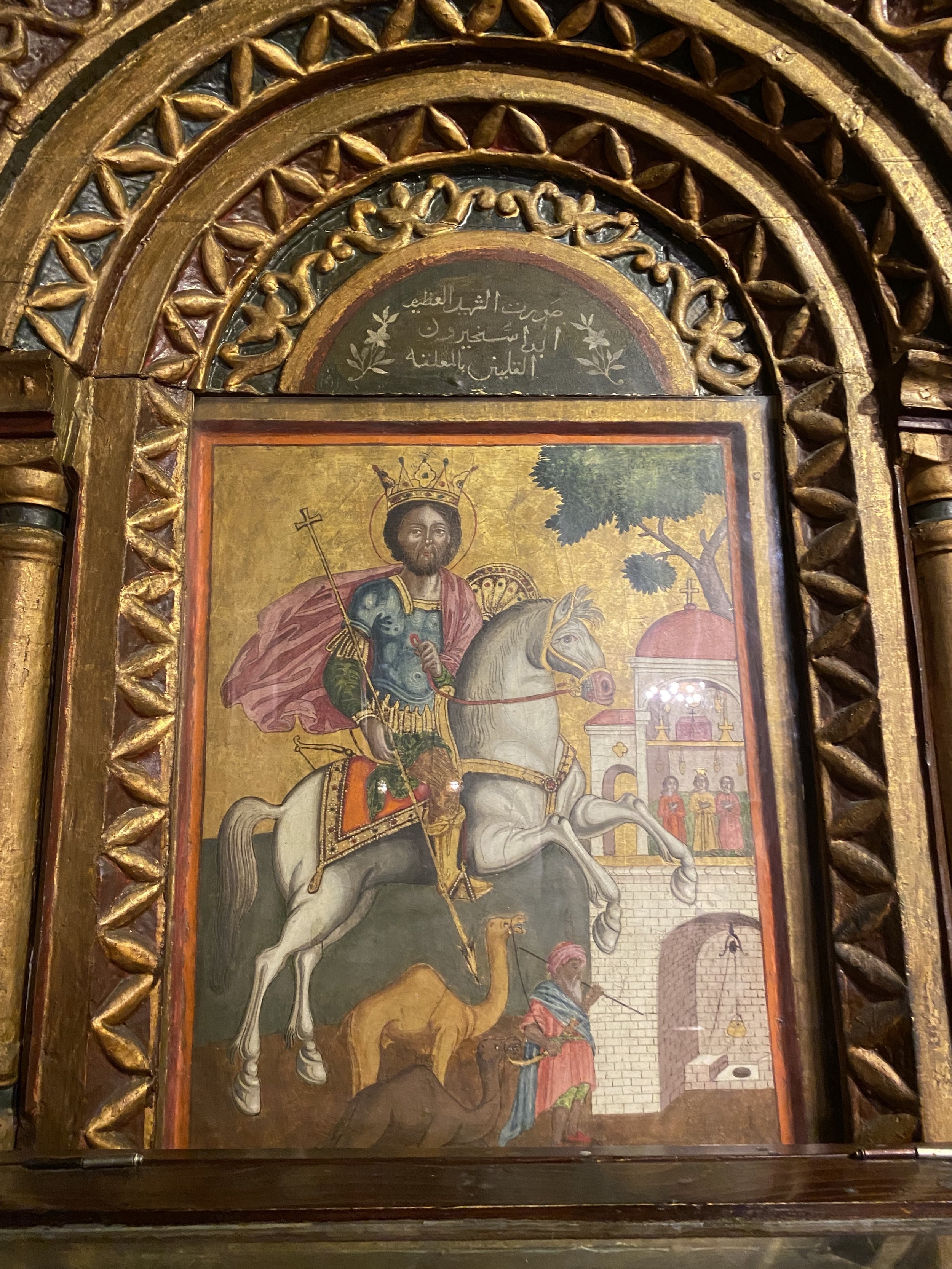
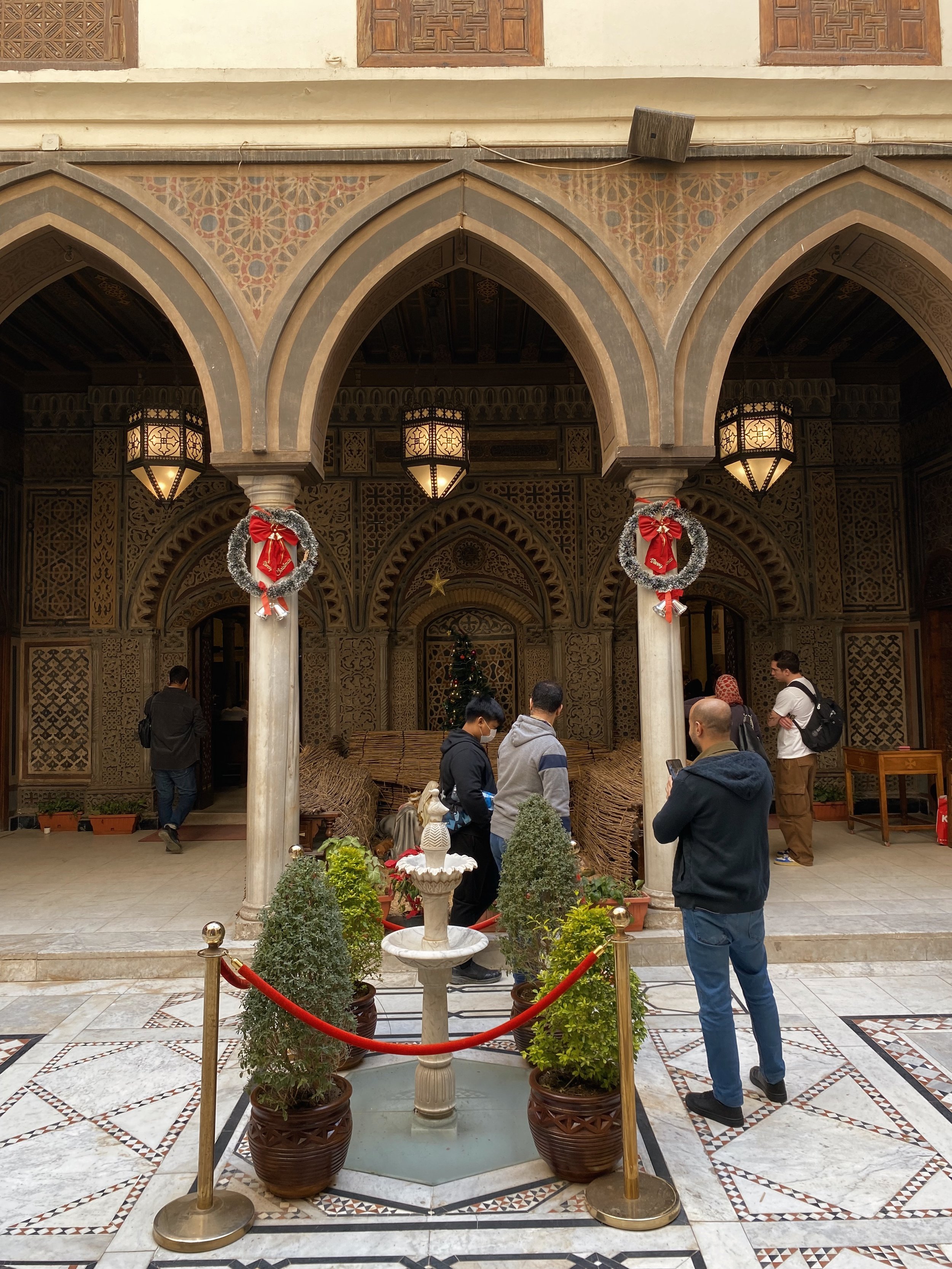
The legend surrounding the Hanging Church is intertwined with the miraculous story of the Mokattam mountain moving. This tale is based on the advice of Saint Simon the Tanner and the faith of Coptic Pope Abraham of Alexandria.
Caliph al-Muizz organized a religious debate where the patriarch Abraham, also known as Pope Abraam.
Abraham won the debate, leading Al-Muizz to challenge him to perform a miracle mentioned in the Gospel of Matthew. The caliph demanded the miracle be done within three days, or else the Copts would face persecution.
Abraham, guided by a vision of Mary, the mother of Jesus, found Simon the Tanner, a one-eyed man. Following Simon's instructions, Abraham and his followers went to the mountain with the caliph and soldiers. By praying and making the sign of the cross, the mountain was miraculously lifted. However, after the miracle, Simon disappeared, leaving the Pope searching for him in vain.
The Mokattam mountain miracle highlights the spiritual aura that surrounds this ancient church and you can find a mosaic capturing this very legend in the Hanging Church today.
You can also visit Saint Simon The Tanner Church in Mokattam which is a 20-minute car ride from The Religious Complex.
2- The Church of St Sergius & Bacchus
Known as Abu Serga, The Church of St. Sergius and Bacchus is believed to have been built in the 4th or 5th century on the site where the Holy Family, according to tradition, rested for three months during their flight into Egypt.
The church is dedicated to Saints Sergius and Bacchus, who were early Christian martyrs. They were officers in the Roman army and became known as Christian soldiers.
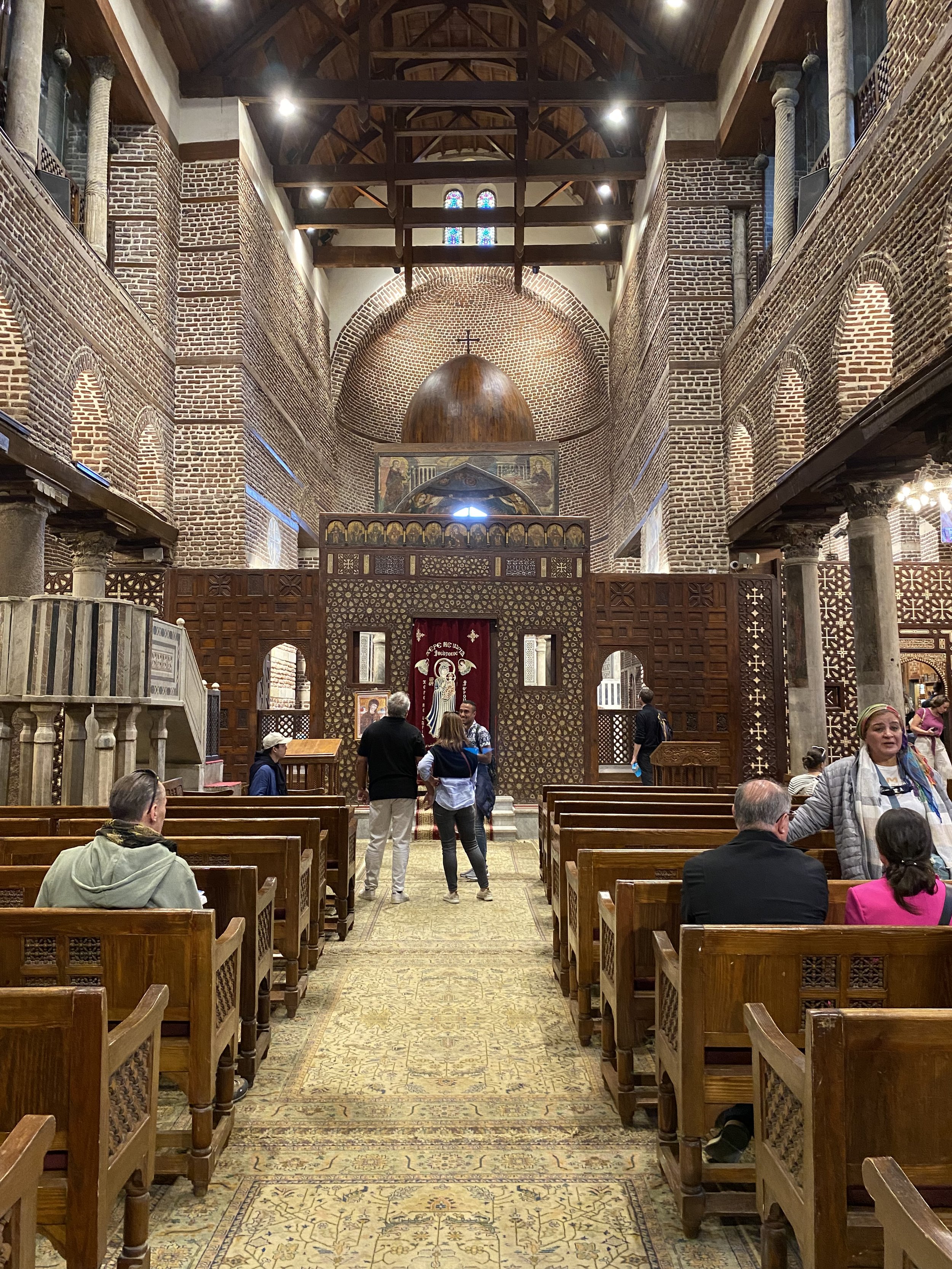
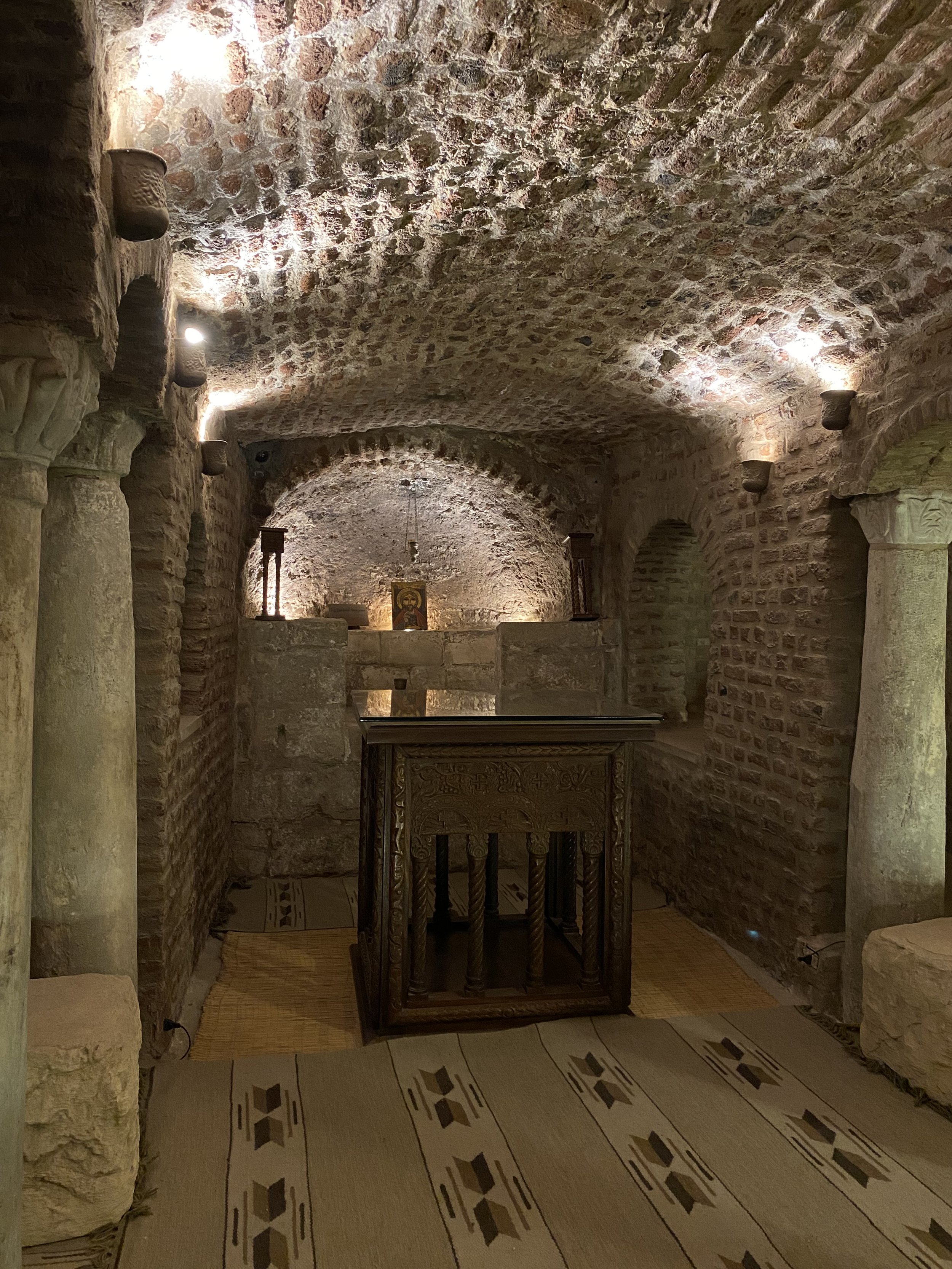
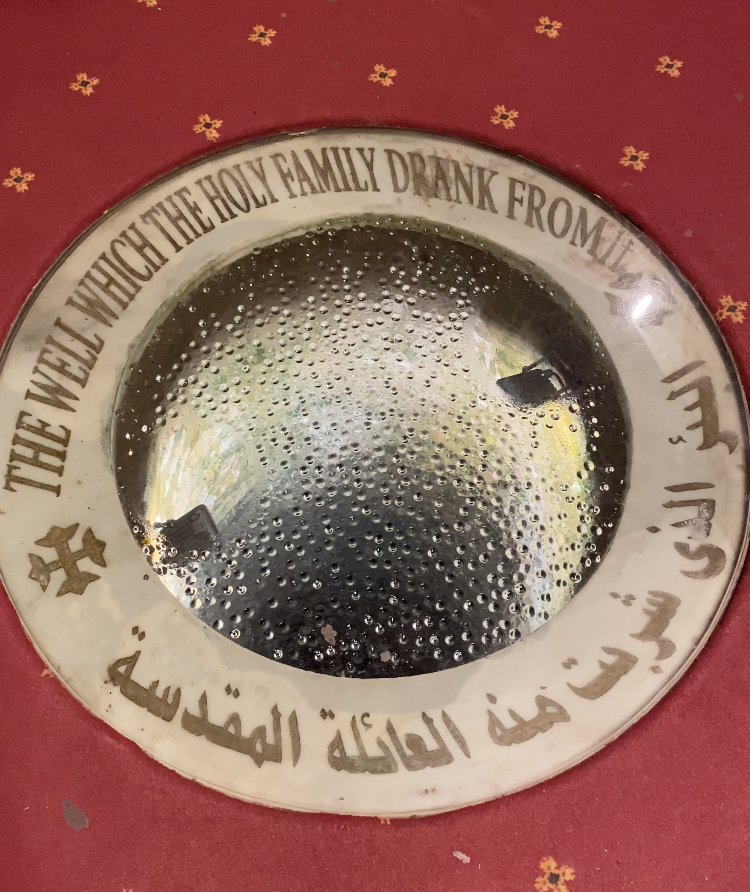
It exhibits a mix of architectural styles, including Coptic, Byzantine, and Arabic influences.
The church is considered a holy site for Coptic Christians due to its association with the Holy Family's journey to Egypt.
Legend has it that a well inside the church courtyard miraculously provided water during times of drought, it’s also said that this is the same well which the Holy family drank from.
Pilgrims and visitors often view this well as a symbol of divine intervention.
3- The Greek Orthodox Monastery & Church of St George
St George (Mar Girgis) is one of the region’s most popular Christian saints. A Palestinian conscript in the Roman army. He is one of the most venerated saints in both the Eastern Orthodox and Western Christian traditions. He is believed to have been born in the late 3rd century. George is often depicted as a Roman soldier and officer in the Roman army. According to tradition, he served under Emperor Diocletian.
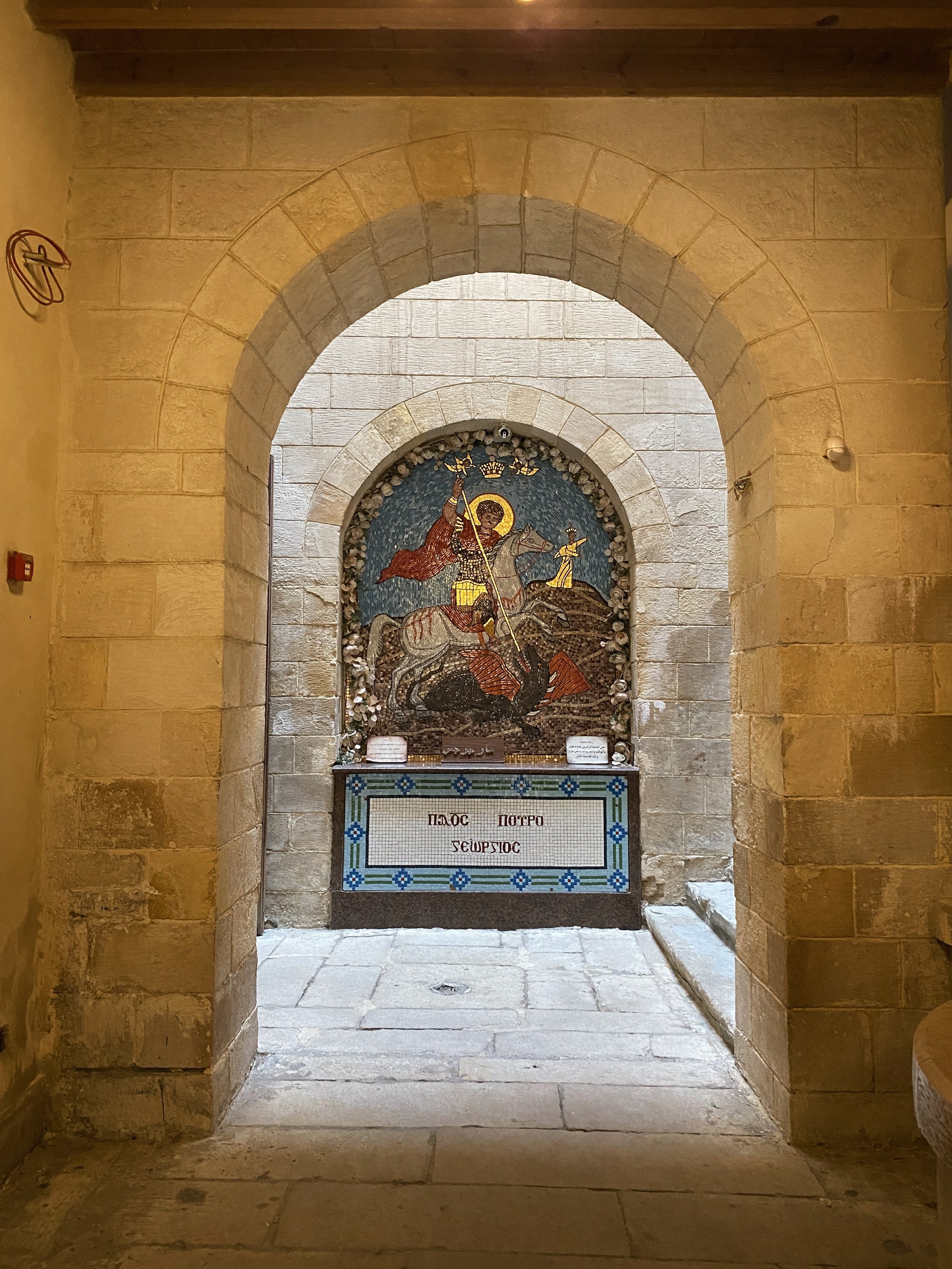
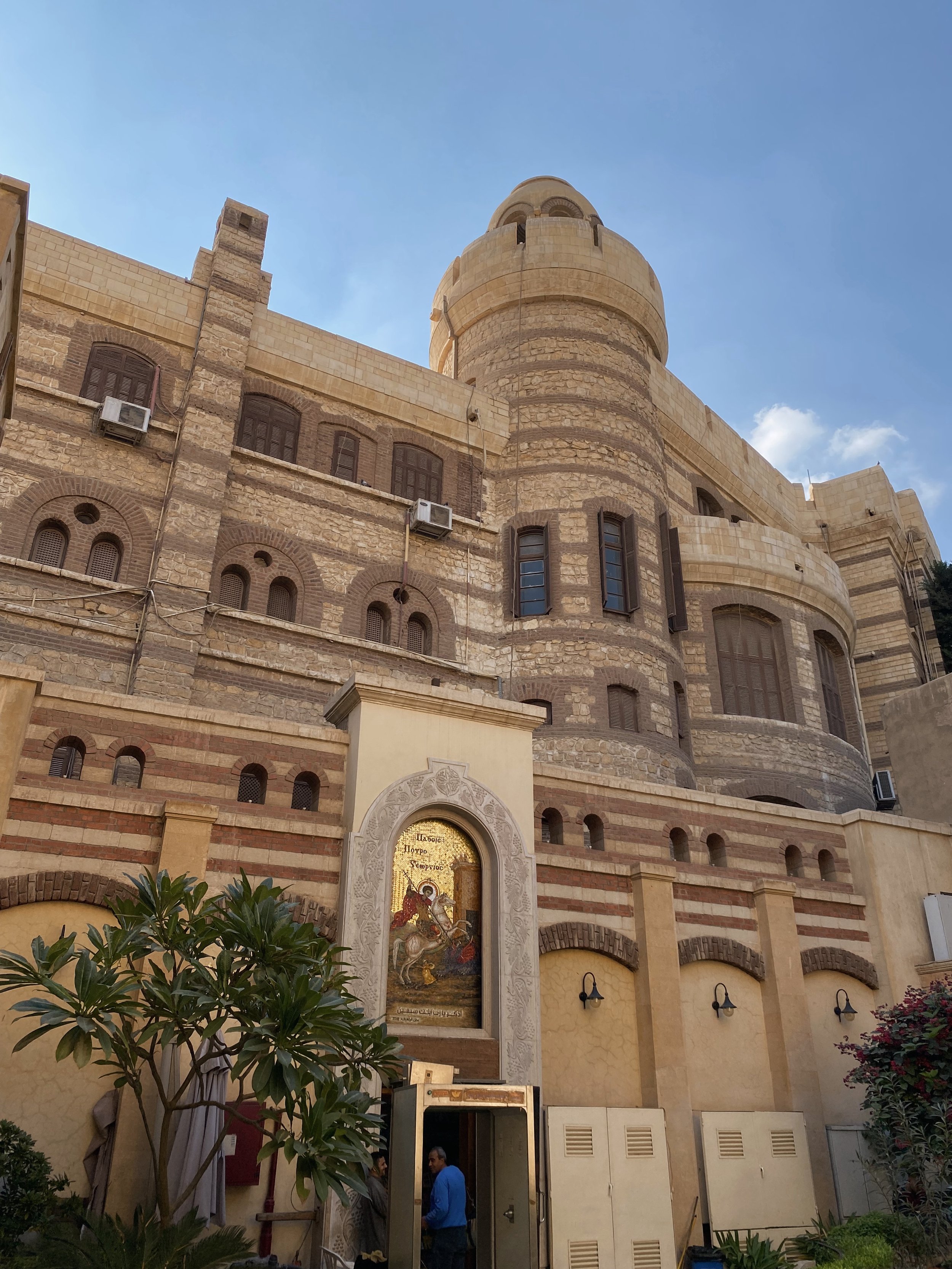


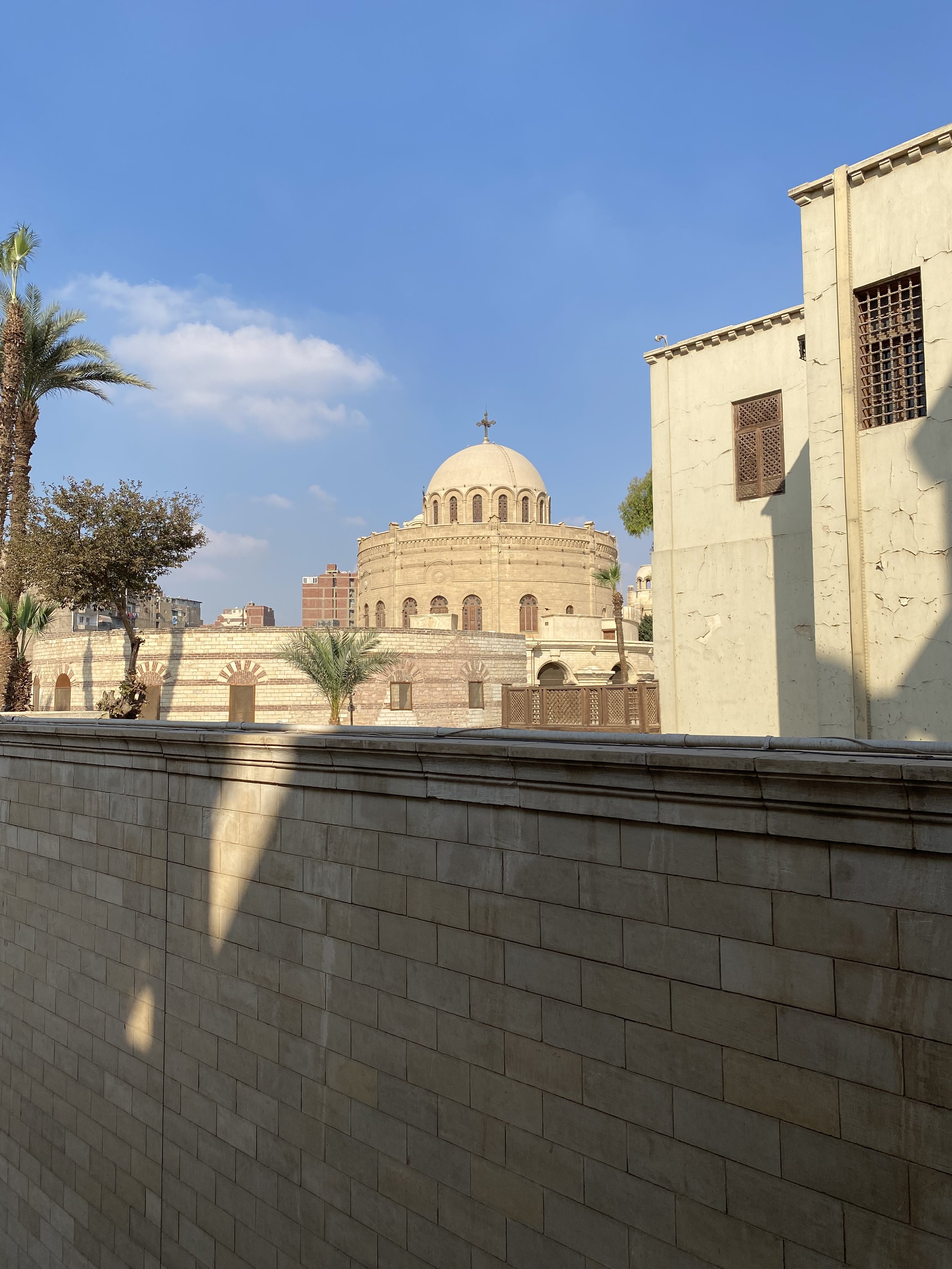
Diocletian's orders led to his imprisonment and torture. Despite facing severe trials, he remained steadfast in his Christian beliefs. The most famous legend associated with St. George is his slaying of a dragon. According to the legend, a dragon terrorized a town, and to appease it, the people offered a human sacrifice. St. George intervened, slayed the dragon, and saved the town. Coptic Cairo has had a church dedicated to St. George since the 10th century or earlier, and the one we see today was built in 1909. According to tradition, the church was built on the same site where St. George was imprisoned in the Roman fortress. Remarkably, the church houses relics and tools believed to have been used in the saint's torture, which have been preserved over the centuries.

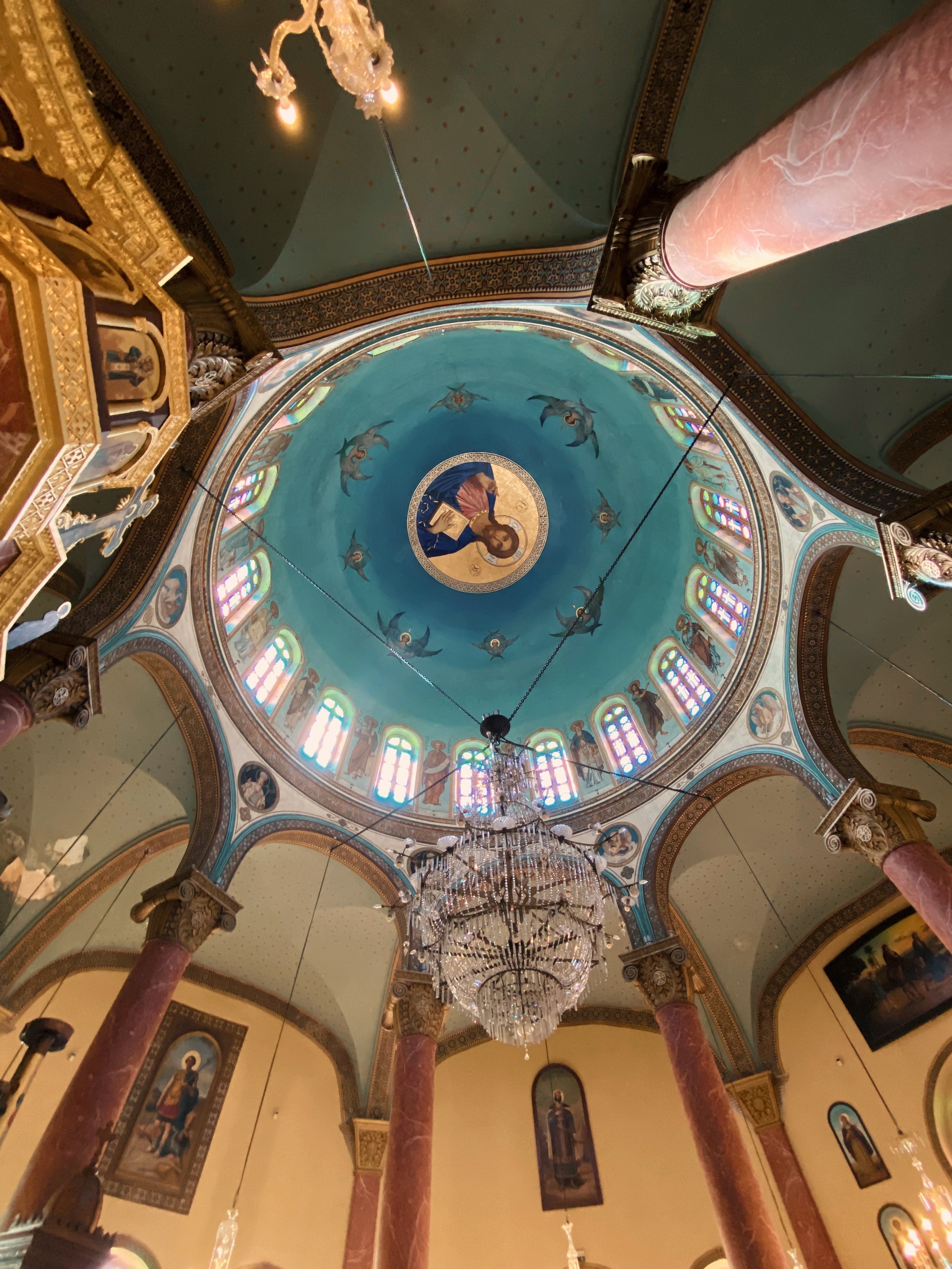

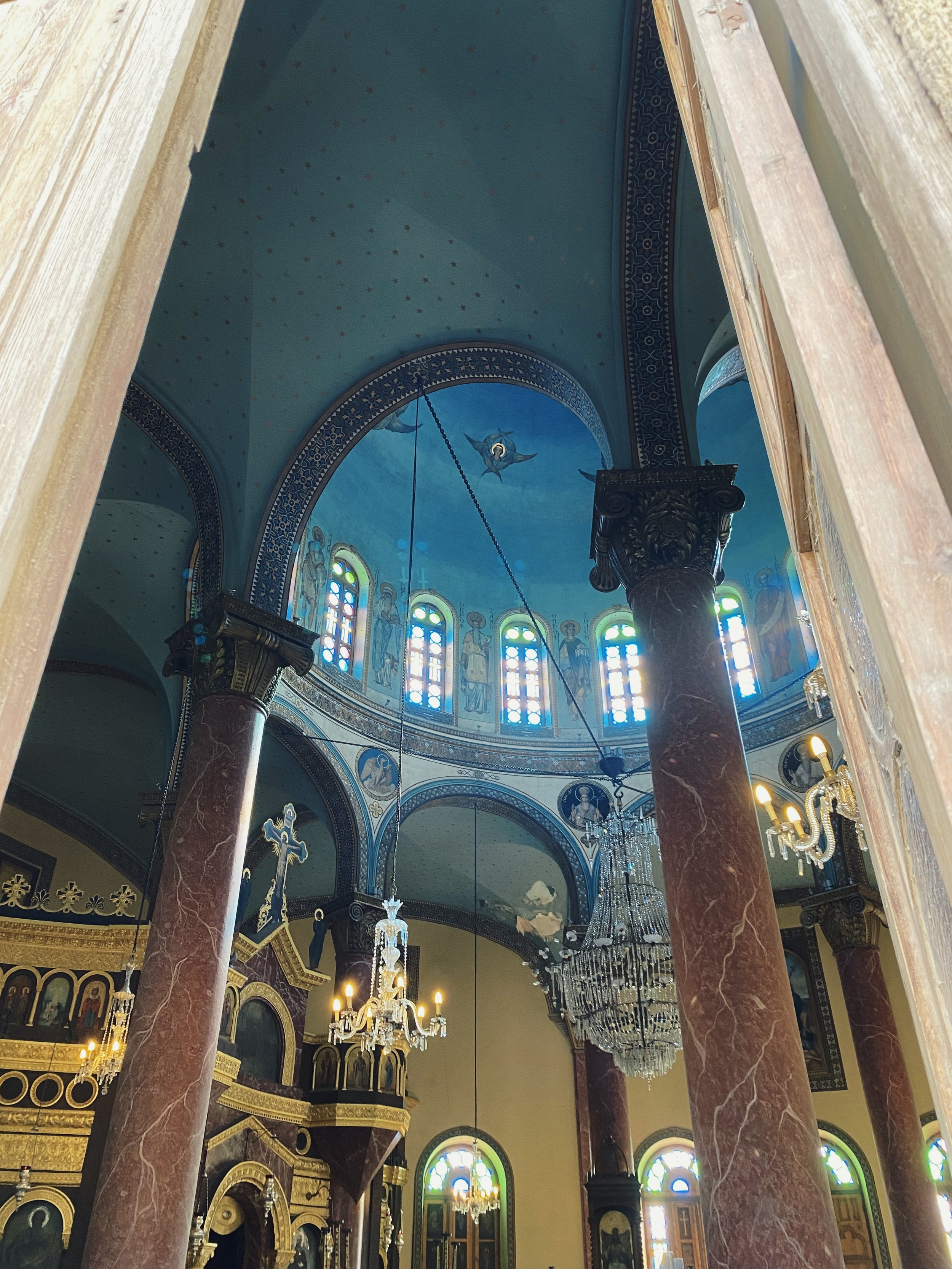
Visitors to the church leave written prayers. When these prayers are answered, devotees express their gratitude by dedicating marble plaques and leaving them with the relics.
4- The Church of Saint Barbara
The Church of St Barbara is dedicated to a martyr who was beaten to death by her father for refusing to revert back from Her Christian Faith. Her supposed relics rest in a small chapel left of the altar, along with a few other saints’ remains. The church houses some rare icons of St Barbara, the Virgin Mary, and Jesus Christ. Saint Barbara’s is considered a twin church to The Church of Abu Serga and next to it is Ben Ezra Synagogue which itself was a church.
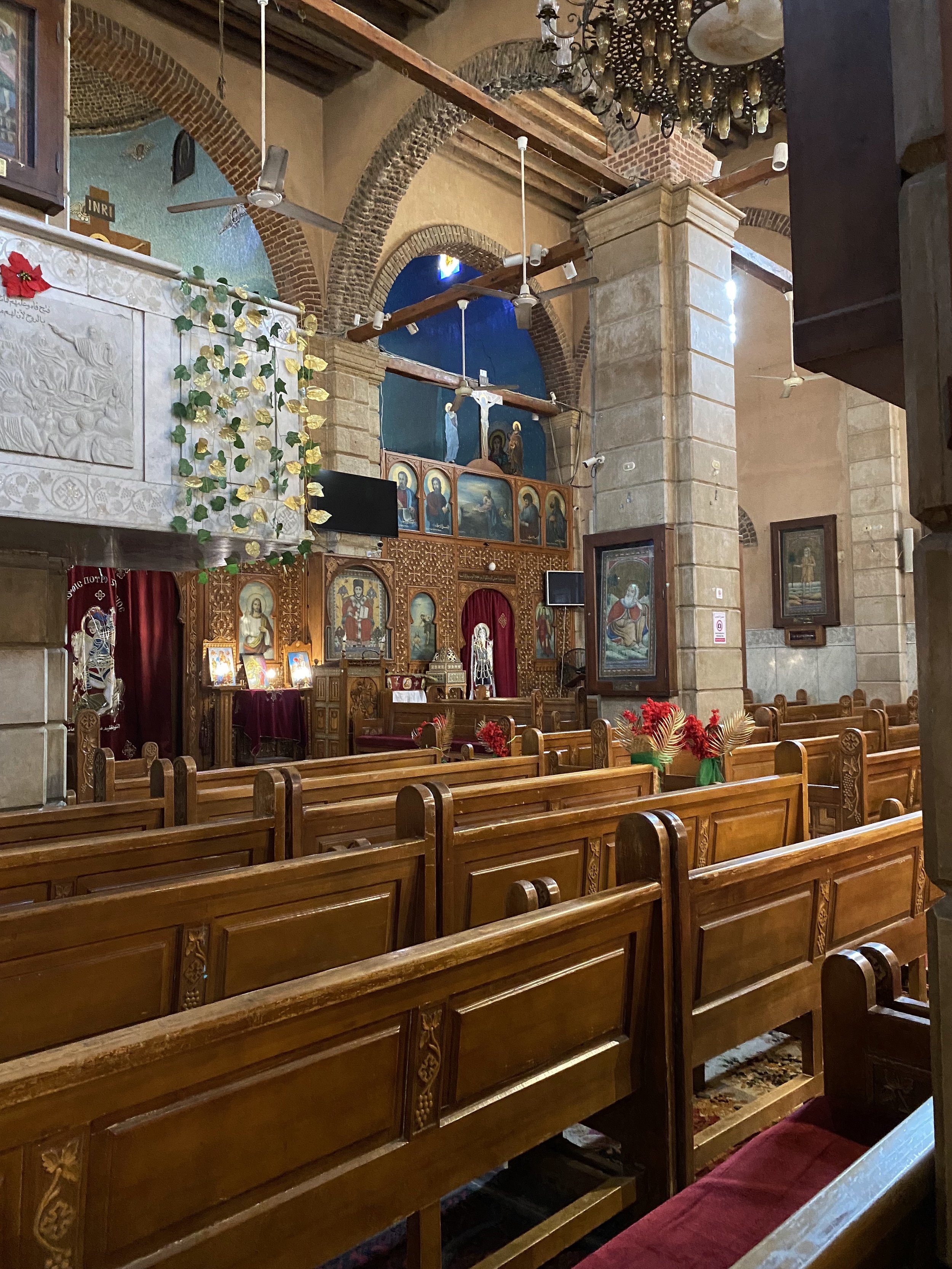
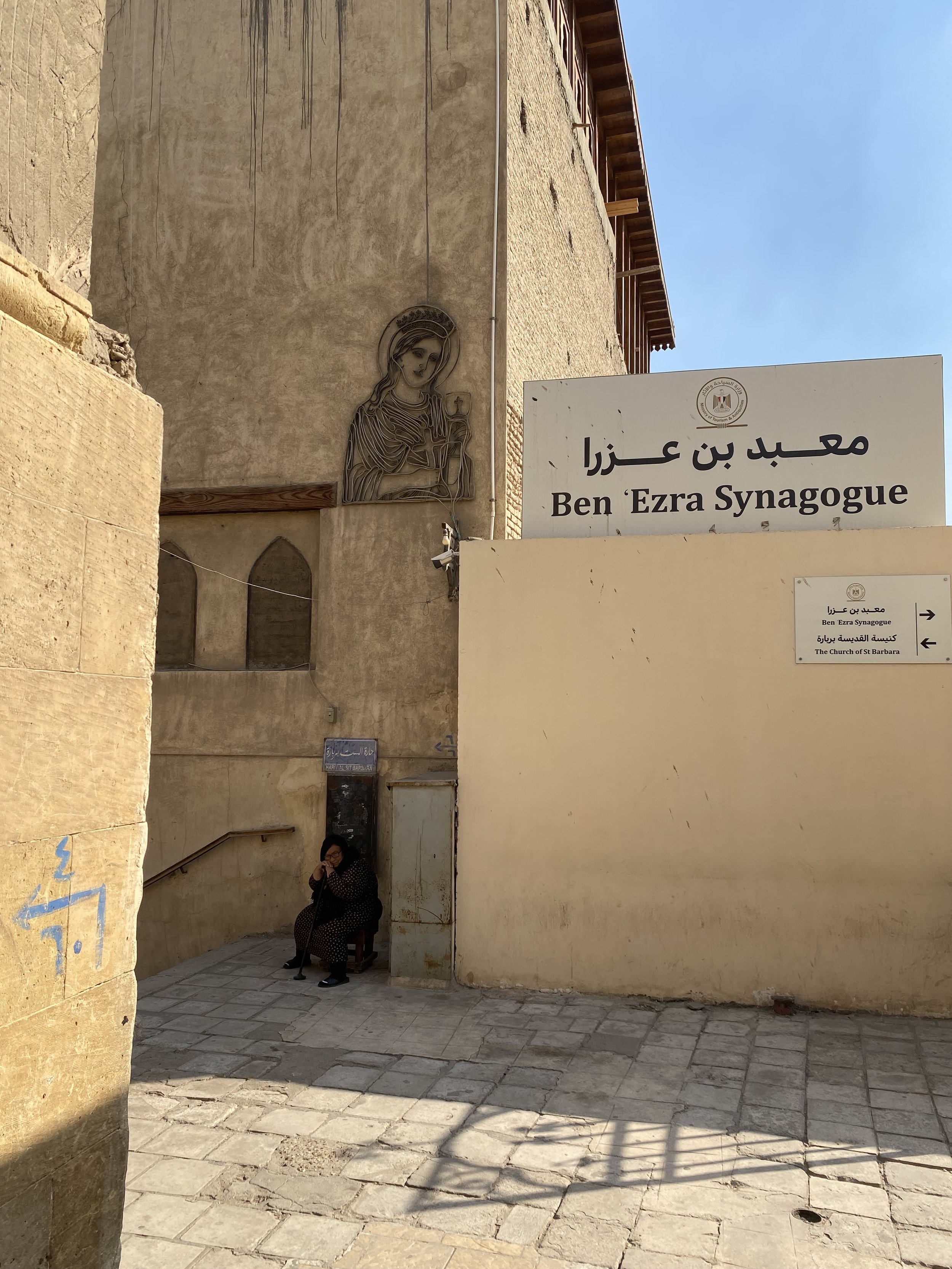

where to go next
Just beyond the complex, we come across the Amr ibn al-As Mosque, a landmark that adds another layer to the cultural area. This mosque, named after the Arab conqueror who founded the city of Fustat, serves as a poignant reminder of the region's centuries-long Islamic influence.
The essence of the Religious Complex is brought to life. It is more than just a collection of religious structures; it is a symbol of the co-existence and harmony that have defined Egypt throughout history. The convergence of different faiths within this historic enclave truly embodies the spirit of diversity and unity, making Coptic Cairo a living testament to the rich and varied religious heritage that continues to thrive in heart of Egypt's capital.
The complex is free to enter and explore, except for the Coptic Museum.
Where can we get a quick bite? Now, we won't be Bellies En-route if we don’t include our favorite restaurants to discover in the area. If you’re getting hungry after a day of exploration, Asmaa recommends Old Cairo Cafe for one of the best falafels in the area. And just outside the complex, we love eating at Haty Abu Ashraf where you can get your Kabab fix.
How do I get there? If you are in Downtown Cairo, you can take the metro directly to Mar Girgis Station!
Can you recommend a guide? Of course! We recommend Walk like an Egyptian who offer custom tours to the Religious Complex. Their expert and friendly guides will give you a brilliant experience.


